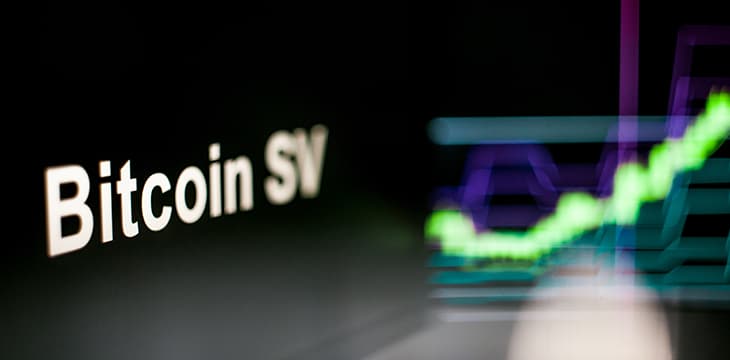|
Getting your Trinity Audio player ready...
|
Recently, I’ve been having a lot of conversations with people that work at big banks and that come from the world of traditional finance. Many of these people and the institutions they represent are actively trying to become more educated regarding blockchain technology and digital currency. As I’ve mentioned in a previous article, many of them don’t quite know how they plan to use or implement a blockchain or digital currency; however, they are all adamant that they need to understand blockchain and digital currency.
Regardless, there is a growing demand for blockchain technology and digital currency in the banking and finance arenas. And something that I have learned along the way is that those who come from the world of traditional finance have a much easier time understanding BSV than they do on the other coins and tokens that exist—but why?
Estimating value
Those who work in traditional finance typically have valuation metrics they use when estimating what a company is worth. These individuals are used to analyzing enterprises like Apple, Google, and Meta (formerly known as Facebook). Companies where you know individuals are waking up and going to work every day to advance the company. People in traditional finance are used to looking at a company’s balance sheet, checking price and earnings ratios, and other tangible data when estimating what a company is worth and whether or not that means they have a promising future.
That being said, when these individuals enter the world of digital currency, they are often confused— they ask me, “How do we estimate the value of a cryptocurrency or blockchain network? What metrics can we use to know what a coin or token is really worth?”
On many blockchain networks, you hit a wall when trying to estimate their true value. On some chains, there aren’t even developers actively working to improve the protocol and there have been no technological advancements made to the network since the day it launched. If you are dealing with a group that comes from a world where they need tangible data—especially data that indicates growth and improvement—before they can invest, it is easy to understand why they wouldn’t understand most digital currencies because most blockchain networks don’t have any tangible data.
What I am learning is that they have an easier time understanding and evaluating Bitcoin SV.
Why Bitcoin SV is different
BSV is one of the only blockchain networks with real utility. On Bitcoin SV there are many individuals and enterprises building real-world solutions on-chain. On Bitcoin SV, you can count the number of businesses building on-chain, see how many transactions they are putting on-chain per day, calculate how many transactions they are likely to put on-chain in the future, and see the average cost associated with putting that data on-chain and transferring it. In other words, BSV has metrics that those who come from the world of traditional finance can use to estimate the future value of the BSV network as well as the companies within the BSV ecosystem. And unlike other blockchain networks, BSV has a market fit: enterprise solutions, government operations, and emerging markets like iGaming and esports.
Other metrics that I find valuable that you can unearth on the BSV network are how many DAUs (daily active users) various apps and services have, the average amount consumers spend on these apps and services per month, how much hash rate is pointed at the network, where a majority of the miners supporting the network are located, what their average cost per month is for electricity, and how many coins/tokens they need to sell per month to remain profitable or at least pay their bills.
Speaking their language
Those from the world of traditional finance have an easy time understanding Bitcoin SV because the BSV blockchain speaks their language: there’s the fundamentals, utility, growth, and other evaluation metrics.
Most blockchain networks and digital currencies have nothing to show in regard to those metrics—and that is why many people from the world of traditional finance say that the blockchain and digital asset industry is just a bubble. A majority of the coins and tokens on the market are not priced/do not trade at any sort of level that correlates to the fundamentals you can extract from their networks.
Some people say that this will come to an end and that the market will eventually go back to trading on fundamentals, but keep in mind, bubbles can last several years. The dot-com bubble lasted roughly six years total.
No one knows if or when the market will converge and go back to trading on fundamentals, but when it does, nearly all of the coins and tokens that we see on the market will crash while a handful of blockchain networks will be left standing. Fortunately, Bitcoin SV is in a position to weather the storm and perform well when the world cares about fundamentals once again.
Watch: CoinGeek New York, Future of Digital Asset Trading & Financial Services

 12-18-2025
12-18-2025 




